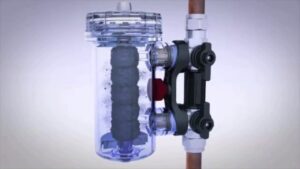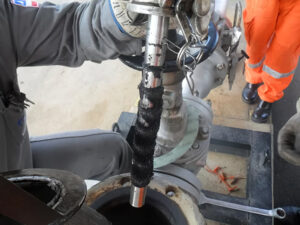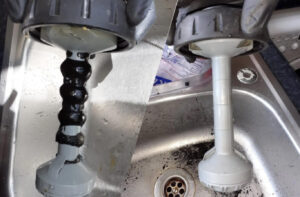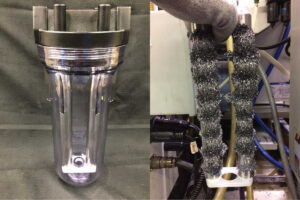Keeping your heating system clean is crucial for efficiency and longevity. Magnetic filters trap debris to keep it from circulating and causing damage. But just like any filter, magnetic types need regular cleaning.
In this step-by-step guide, as a professional magnetic filter manufacturer, we’ll walk through how to clean a magnetic filter in just a few minutes.

Why Cleaning Your Magnetic Filter Matters
Before jumping into the cleaning process, let’s review why taking the time to maintain your magnetic filter pays off.
Traps Harmful Particles
The magnet inside these filters captures ferromagnetic particles like iron oxide. Without a magnetic filter, this sludge would flow freely, coating the inside of radiators and boilers.
Over time, buildup decreases efficiency, drives up energy bills, and can lead to component failure or even dangerous situations.
Extends System Lifespan
By capturing all those tiny fragments, a clean magnetic filter protects the entire heating system from wear and tear. Regular cleaning removes the trapped gunk so the magnet can keep grabbing debris.
This keeps damaging particles from causing corrosion or abrasion damage to pumps, valves, heat exchangers, and other hardware. And that means fewer repairs and replacements.
Saves Money
A filter clogged with debris can’t do its job, allowing contaminants to reach sensitive components. Repairing or replacing those parts gets expensive fast.
Cleaning the magnetic filter takes just a few minutes but keeps the system running at peak efficiency. And an efficient system uses less energy, saving money month after month.
Prevents Problems
Failure of components like circulator pumps or control valves often means no heat until repairs are made. No one wants to deal with an inoperable boiler on the coldest day of the year.
While a clean filter can’t prevent all issues, keeping gunk out of the system slashes the chances of inconvenient, costly breakdowns.
What You’ll Need
Cleaning the magnetic filter doesn’t require any special tools or materials beyond what you likely already have on hand.
Safety Gear
- Protective eyewear
- Work gloves
- Old towel or drop cloth
Tools
- Adjustable wrench or filter tool
- Small brush or old toothbrush
- Flathead screwdriver (optional)
- Flashlight (optional)
Other Supplies
- Replacement filter gasket (optional)
- Pen & paper for notes (optional)
Replacement Filter Media
Some systems use inexpensive mesh screens or cartridges inside the canister instead of a magnet. Check whether yours needs a new cartridge and have a spare ready to swap out the old one.
How to Clean a Magnetic Filter
Step 1: Turn Off Power
Start by switching off power to the boiler at the breaker panel or by unplugging it. Verify it does not restart unexpectedly.
Warning: Never open or service the filter while power is connected or the boiler could turn on automatically, posing serious risks of electrical shock or severe burns.
If your system has isolation valves that cut off water on both sides of the filter, close them as well.
Step 2: Release Pressure
Even with the boiler off, water pressure may remain inside the filter housing. Use caution opening any part of a pressurized system.
Slowly loosen the vent screw or pressure relief valve at the top of the filter canister. This allows built-up pressure to escape safely.
Place an old towel underneath to catch drips. Let water drain out completely before proceeding.
Step 3: Remove the Filter Housing
Refer to your owner’s manual for specifics on the model of magnetic filter installed. Filter housings attach in various ways but typically have either a large plastic nut or metal clamp.
For nut-mounted filters:
Use an adjustable wrench or purpose-built spanner tool to unscrew the nut. Take care not to strip the threads.
For band-clamp filters:
Loosen the clamp screw slowly, catching the band as it detaches so it doesn’t pop off suddenly and get lost.
Tip: Penetrating oil or a quick tap from a screwdriver often helps break seals loose.
Once detached, pull the cylindrical filter housing off the pipes and set it upside down in a sink or on the protective cloth you laid out.
Step 4: Remove and Scrub the Magnetic Core
Inside you’ll find the cylindrical filter element along with the powerful magnet responsible for extracting all those damaging fragments over time.
Grip the magnet and pull firmly to slide it out of its chamber, taking care not to pinch fingers between objects.
You’ll likely find a thick slurry of gunk all over the magnet and filter element. Use a toothbrush, small wire brush, or other abrasive scrubber to thoroughly clean crevices and corners.
Finish by rinsing all loose debris off the magnet and components under hot running water or with a garden hose.
Step 5: Examine and Replace Seals
While disassembled, inspect filter seals and gaskets for signs of brittleness, leaks, or damage. Replacements are cheap and failure to make watertight connections could lead to bigger problems.
Typically, magnetic filters have one large O-ring where the body meets the base and a smaller one seating the removable lid. Ensure these remain in position during reassembly.
Pro Tip: Apply a small dab of non-petroleum grease to seals when installing to help them slide into place and improve longevity.
Step 6: Reinstall Filter Components
Once all pieces are clean and seals checked, reassembly is the reverse of removal.
- Slide magnet back inside filter housing
- Hand tighten lid
- Attach filter to pipe fittings
- Secure with clamp or retighten nut
Slowly reopen isolation valves if closed. As water re-enters, use the vent screw to release trapped air so the system doesn’t air lock.
With everything back together properly, restore power and test normal operation before considering the task complete.
How Often Should You Clean Magnetic Filters?
Most experts recommend cleaning magnetic heating filters annually before each heating season ramps up. But a few factors can alter ideal service intervals.
Water Quality
Hard water accelerates scale accumulation and corrosion compared to soft water. Areas with very hard supply may necessitate biannual cleanings to keep efficiency maxed out.
Boiler Run Time
A filter on a boiler running near full-tilt to serve a large home or commercial space fills faster than one supplying a small apartment. Check filters on workhorse systems more frequently.
Fuel Type
Diesel or oil-fired setups often need cleanings twice as often as cleaner natural gas or electric boilers. Their filters capture extra soot and combustion particulates.
Age of System
Brand new builds won’t release much debris into the pipes and water. But in older constructions or remodels, decades of loose scale and sediment wash through until the system stabilizes.
When in Doubt, Check It Out!
It takes so little time to open the filter and take a quick peek. Set a reminder to examine it halfway through the heating season. If it looks dirty, take the few extra minutes to scrub it out.
While not difficult, cleaning the magnetic filter yourself does require working on a sealed, pressurized hydronic system. If tackling plumbing projects makes you uncomfortable, call a local professional heating technician.
They have all necessary expertise and equipment to handle the job safely and properly for around $75-150. Well worth it for peace of mind and keeping your system running flawlessly.






1 thought on “How to Clean a Magnetic Filter in 6 Easy Steps?”
Thank you for these instructions. We just cleaned the filter ourselves with no issues.
We have a new gas furnace Navian, but still kept our 1950 or 1960s cast iron radiators. How effective are the magnetic filters at protecting these new furnaces with their intricate parts such as fins to heat the water to your knowledge?